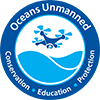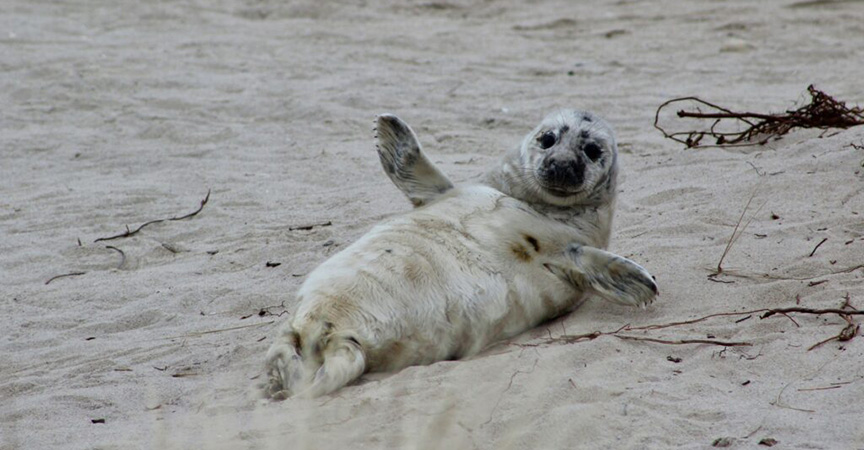Case Study: Muskeget Island
Kimberly Murray, a biologist who leads the Seal Ecology and Assessment Program at NOAA’s Northeast Fisheries Science Center in Woods Hole, is working with Oceans Unmanned to better understand the role of gray seals in the ecosystem.
With help from Brian and Matt, her team surveys Muskeget Island each winter, home to one of the largest gray seal pupping colonies in the entire western North Atlantic stock. “And it’s only on this one square kilometer island,” Kimberly says.
Using a drone, which takes off vertically before transitioning into an efficient fixed-wing aircraft, the team can survey the whole small island in high resolution in about ninety minutes. “It’s a really useful tool to monitor trends in abundance at that site and the rates of increase in the number of pups that are born each year in the population,” Kimberly says. “We try to target at peak time, after all the pups are born, which is usually early January.”
“The gray seals are increasing,” she says. “We know from measuring the number of pups born each year. A lot of that is driven by immigration from Canada. Some animals that were born in Canada are now having their pups in the U.S., and once they do that, they tend to come back to the same island to have their pup again.”
“Overall I think that’s a sign of a healthy marine environment, because we have suitable habitat and the environment rich enough to support that growth,” she says. “It does come at a social cost to the people who interact with seals on shared beaches or fishermen who are trying to make a living. And white sharks venture into that picture there too, because they are obviously now near parts of the outer cape foraging on seals where historically they weren’t here in large numbers.”
“As we overlap more and more with the recovering population, we’re trying to work out how to coexist with that. The drones have been a really great tool in helping us understand the rates of growth, and coupled with information on movements and distribution, we can also get a sense of what kind of habitat these animals are using and where they might be coming into conflicts with the public.”
A three dimensional rendering of Muskeget island, the second largest pupping colony in the Northwest Atlantic for gray seals, produced during a drone flight by Oceans Unmanned.
Her team also uses smaller, “hexacopter” drones for studying individual animals. “We can get better imagery of, say, that animal’s mass, or whether or not it might have health issues like an entanglement, or any marks, brands, or tags existing on the animal already,” she says.
They’re even experimenting with getting volumetric data on individual animals. ”If you fly a certain pattern, you can create a 3D image of the seals. If you can get an idea of their length and weight and their body condition, you might be able to assess whether or not that’s changing over time in the colony which could be an indicator of the changes in the environment,” she says.
Some challenges remain — because drone pilots still need to have line-of-sight proximity to their equipment, the team still needs to physically set foot on this small island in winter.
“Leaving from Woods Hole to go over to a little island off Nantucket in January in a twenty-five-foot, center console, open air boat, in your Mustang suit, it’s a little hairy sometimes,” Kimberly says. A future scenario where a drone could fly round-trip from Nantucket would be “a much safer mission,” she explains.
Still, she says, “I never would have imagined that we would be flying drones over animal colonies to study not just numbers, but their particular characteristics.”

